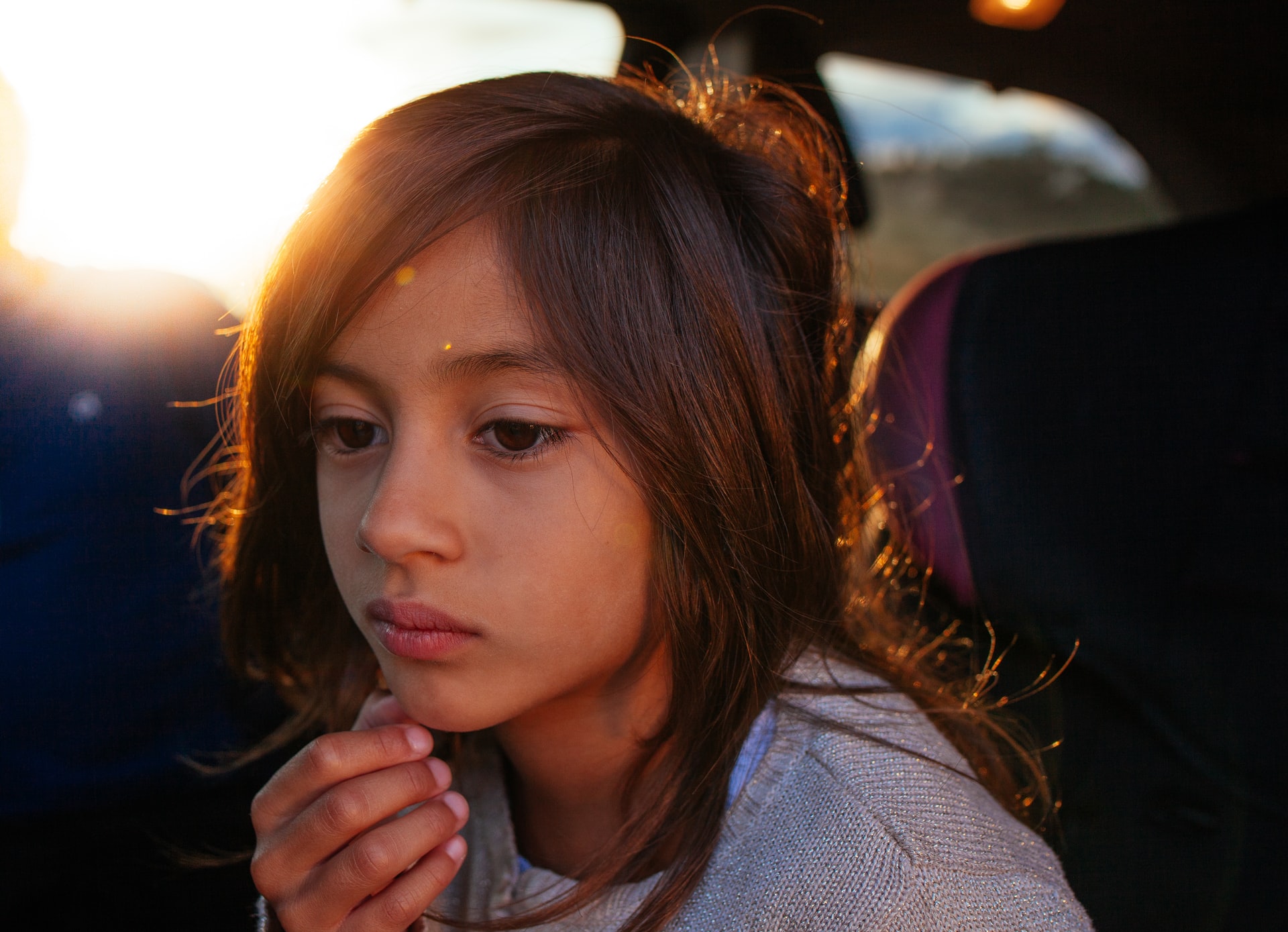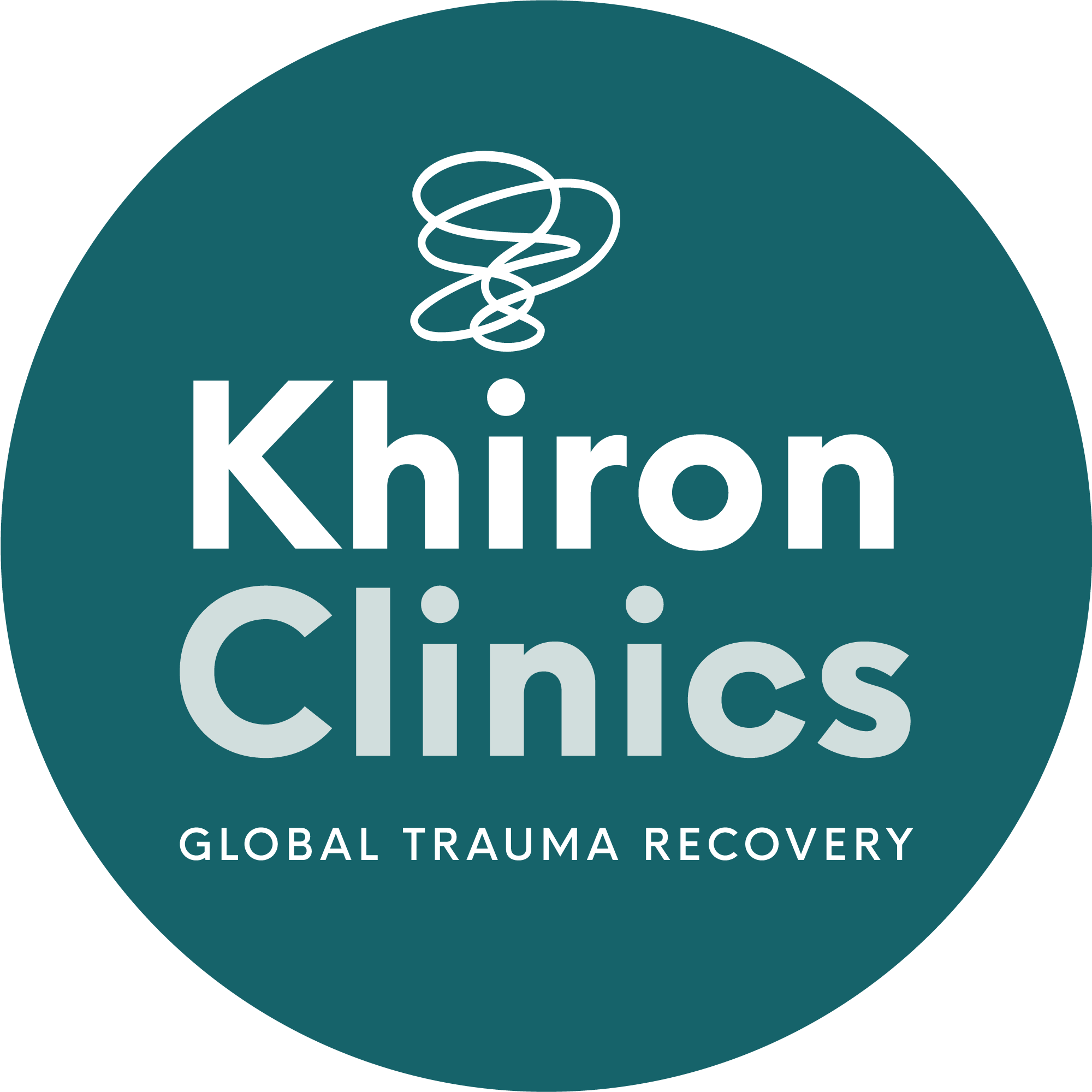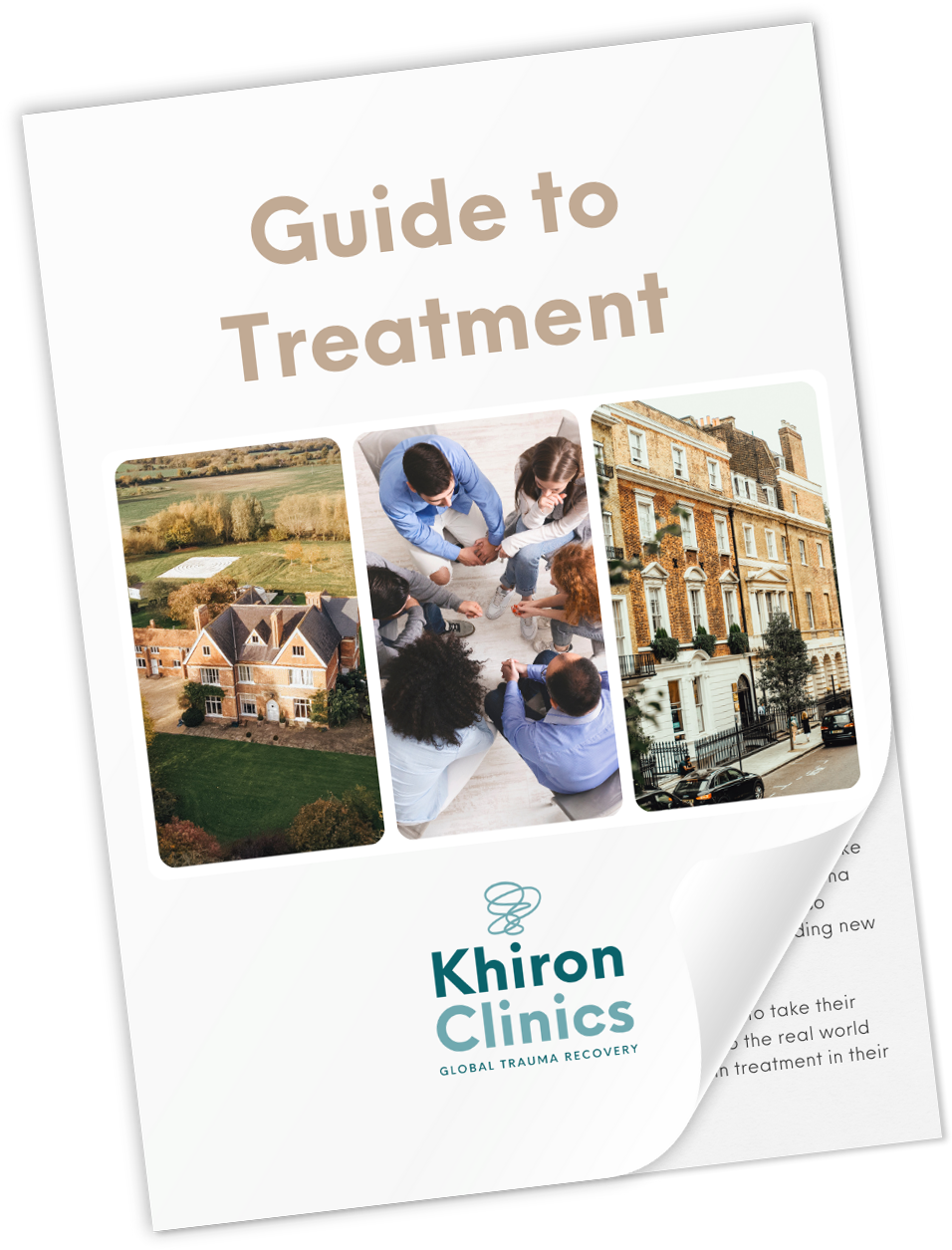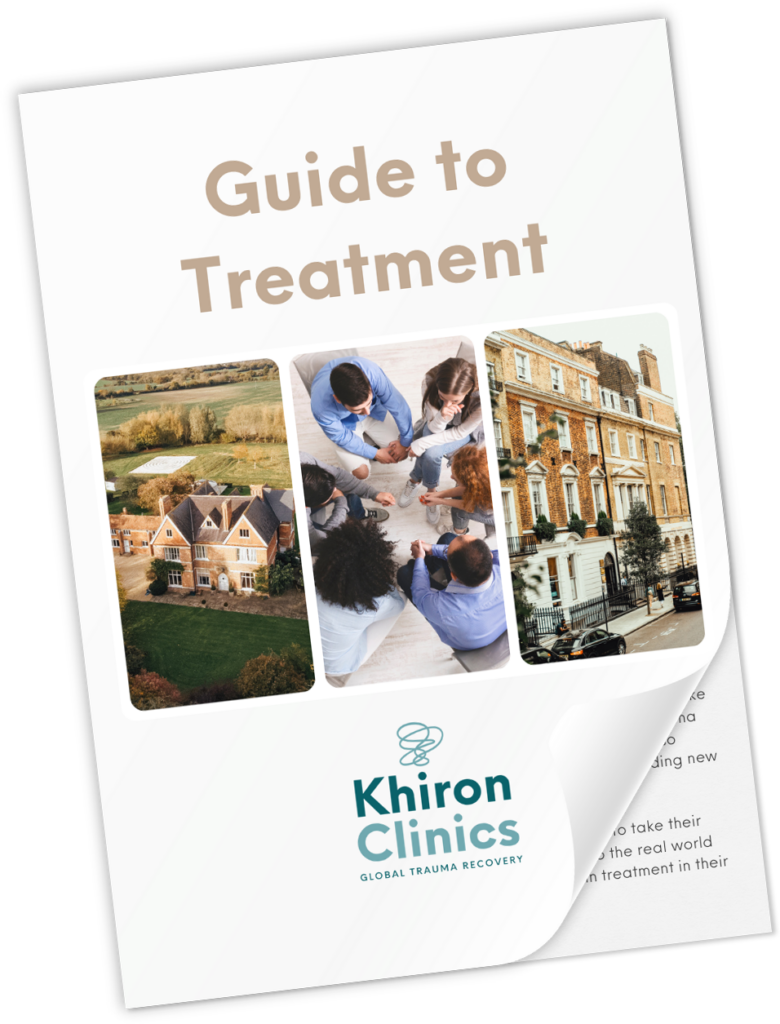Trauma can have a lasting, destructive impact on a child’s life. Traumatic events in childhood, which could range from sexual abuse to abandonment to the sudden loss of a loved one1, can shape a child’s worldview. The child’s brain is still developing, and the stress of a traumatic experience influences how the brain develops moving forward.
It is essential to recognise the signs and symptoms of trauma in children so that treatment can be sought as early as possible. Though trauma’s impact can be debilitating, effective interventions are available to reduce the symptoms and prevent the onset of later physical, mental, and behavioural health issues.
Children affected by trauma are likely to exhibit a range of physical, mental, and behavioural symptoms that risk a decline in their health and academic and social well-being.2 Traumatic events are those which overwhelm the nervous system and lead to a ‘freeze’ response.3 Common traumatic events experienced in childhood include4:
-
Sexual abuse
-
Physical abuse
-
Verbal Abuse
-
Neglect, abandonment
-
Emotional or mental health issues in a parent
-
Incarceration of a family member
-
Exposure to substance abuse in the home
-
Sudden loss of a loved one through terminal illness, suicide, or accident
-
Exposure to domestic violence
-
Exposure to a natural or human-made disaster
-
Exposure to acts of terrorism
-
Community or school violence
-
Medical trauma
-
Vehicle accidents
All mammals freeze in response to overwhelm.5 In animals, the freeze response looks like playing dead as a means of surviving the threat. Humans do not usually feign death in response to an overwhelming threat. Instead, we tend to dissociate.6 Dissociation manifests as a disconnect between the mind and body, where the mind enters an altered state of consciousness to avoid the potential implosion of the psyche as a result of the disturbing, overwhelming event.7
Sexual abuse, particularly when perpetrated by a close family member such as a parent, is one of the most damaging and destructive events a child can experience.8 Children look to their caregivers for safety when they feel threatened. If a child’s source of safety is also the source of threat, the mind and nervous system become confused and frightened. Such trauma poses a significant risk of psychological and behavioural illness in later childhood, adolescence, and adulthood.9
Children who have experienced sexual abuse often blame themselves because, in their developing perspective of the world, the caregiver seems like an infallible authority figure. The child has not yet developed the ability to think critically about the parent’s behaviour.
The symptoms of trauma children exhibit usually depend on the child’s age. In preschool children, common trauma symptoms include:
-
Helplessness
-
Uncertainty
-
Separation anxiety
-
Excessive crying/screaming
-
Frequent bedwetting
-
Returning to baby talk
-
Nightmares
-
Recreating the traumatic event in play
-
Delay in moving to next stage of development
-
Questions about death and dying
In children of primary school age, trauma symptoms may include:
-
Anxiety/fearfulness
-
Excessive worry about personal safety or the safety of others
-
Clinginess to parents or teachers
-
Guilt
-
Shame
-
Repeating stories of the traumatic event
-
Poor concentration and attention
-
Sleep problems
-
Easily startled
-
A decline in school performance
-
Behavioural issues in school or at home
In older children and adolescents in secondary school, trauma can manifest as:
-
Depression
-
Anxiety
-
Detailed discussions about the traumatic event
-
Self-harm
-
Substance misuse
-
Sexual promiscuity
-
Alienation, isolation
-
Sleep problems
-
Avoidance of people, places and things that remind them of the trauma
-
Behavioural changes
-
Emotional numbness
Trauma leads to a prolonged release of stress chemicals in the brain and body that jeopardise our overall health and well-being.10 This is known as toxic stress and is particularly harmful to children. Children will show a range of confusing, worrying, even disturbing behaviours in response to toxic stress.
Effects of Traumatic Stress on Children
According to the National Child Traumatic Stress Network, ‘child traumatic stress occurs when children and adolescents are exposed to traumatic events or traumatic situations that overwhelm their ability to cope.’11
Children struggling with traumatic stress are likely to exhibit any of the following:
-
Behavioural changes
-
Irritability
-
Social withdrawal
-
Acting younger than one’s age
-
Difficulty interacting with others
-
Appetite changes
-
Sleep disturbances
These symptoms are automatic. They are not the child’s choice or in the child’s conscious control. Trauma leads to the onset of many negative and disturbing emotions, such as fear and confusion. The above symptoms can arise out of an attempt to deal with those emotions. These symptoms occur shortly after the traumatic event in some children, while the symptoms may show up later for others. They can subside at times and resurface at a later date.
The Importance of Recognising Child Traumatic Stress
Traumatic stress affects a child’s development and behaviour.12 Though adults also experience trauma, their level of maturity and brain development often helps them process traumatic events more healthily. It is easier for adults than it is for children to viscerally understand that a traumatic event has passed and that things are once again normal. Early-life trauma can reshape a child’s brain, wiring it to be on constant lookout for threat, or influencing its development. Childhood trauma can also lead to a range of behavioural health issues in children and adults.
If a child trauma survivor does not receive early intervention and treatment, they will likely carry their trauma into adulthood. The traumatised adult is subject to:
-
Heightened reaction to stress
-
Chronic pain
-
Physical illness
-
Relationship issues
-
Learning difficulties
-
High-risk behaviours – criminal activity, substance abuse, self-harm
Risk Factors for Childhood Trauma
Not all children who experience a traumatic event or events will suffer the adverse effects of trauma. There are certain factors at play that influence how a child will respond to a traumatic event. These factors include:
-
The severity of the event
-
Availability of support after the event
-
History of trauma
The seriousness of the traumatic event can influence the child’s immediate and long-term response. If there was a severe physical injury or death, that might have a longer-lasting impact than a mild injury.
Suppose a loved one dies through suicide or a vehicle accident. In that case, the severity of trauma may be greater than if the loved one had died through long-term progressive physical illness. The proximity to the traumatic event also influences its influence. For example, if a child witnesses the death of a loved one, the effects may be more severe than they would if the child had not witnessed the death.
The level of support given to the child post-event is influential. For example, the way the caregivers respond to the child’s experience shapes how the child feels about the experience.13 The parents may or may not believe the child, or may also be overwhelmed and feel unable to attune to the child’s needs due to their own feelings of overwhelm.
The child’s history of trauma plays a significant role in how well they respond to traumatic events. Children with prior experience of trauma are far more likely than those without to experience the adverse effects of severe traumatic stress.14
Treatment for Child Traumatic Stress
Even when children are fortunate enough to receive attuned and compassionate support following a traumatic event, some do not recover independently. In many cases, professional treatment is necessary. A mental health professional can deliver trauma-informed care to help child trauma survivors process and overcome their trauma. Effective interventions for child trauma involve:
-
Developing the child’s distress tolerance
-
Exploring their trauma through play
-
Involving family members in treatment where appropriate
Evidence-based, trauma=informed care is available in the form of trauma-focused therapy , experiential therapies such as drawing, music therapy, and art-based therapy, and family-based therapy. Treatment for child trauma survivors depends on the nature and severity of the trauma and the time that treatment is sought.
1 Copeland, William E et al. “Traumatic events and posttraumatic stress in childhood.” Archives of general psychiatry vol. 64,5 (2007): 577-84. doi:10.1001/archpsyc.64.5.577
2 The National Child Traumatic Stress Network. n.d. About Child Trauma. [online] Available at: <https://www.nctsn.org/what-is-child-trauma/about-child-trauma> [Accessed 19 April 2021].
3 Schmidt, Norman B et al. “Exploring human freeze responses to a threat stressor.” Journal of behavior therapy and experimental psychiatry vol. 39,3 (2008): 292-304. doi:10.1016/j.jbtep.2007.08.002
4 Saunders, Benjamin E, and Zachary W Adams. “Epidemiology of traumatic experiences in childhood.” Child and adolescent psychiatric clinics of North America vol. 23,2 (2014): 167-84, vii. doi:10.1016/j.chc.2013.12.003
5 Roelofs, Karin. “Freeze for action: neurobiological mechanisms in animal and human freezing.” Philosophical transactions of the Royal Society of London. Series B, Biological sciences vol. 372,1718 (2017): 20160206. doi:10.1098/rstb.2016.0206
6 Schmidt, Norman B et al. “Exploring human freeze responses to a threat stressor.” Journal of behavior therapy and experimental psychiatry vol. 39,3 (2008): 292-304. doi:10.1016/j.jbtep.2007.08.002
7 Lanius, Ruth A. “Trauma-related dissociation and altered states of consciousness: a call for clinical, treatment, and neuroscience research.” European journal of psychotraumatology vol. 6 27905. 19 May. 2015, doi:10.3402/ejpt.v6.27905
8 Murray, Laura K et al. “Child sexual abuse.” Child and adolescent psychiatric clinics of North America vol. 23,2 (2014): 321-37. doi:10.1016/j.chc.2014.01.003
9 Murray, Laura K et al. “Child sexual abuse.” Child and adolescent psychiatric clinics of North America vol. 23,2 (2014): 321-37. doi:10.1016/j.chc.2014.01.003
10 Center on the Developing Child at Harvard University. n.d. Toxic Stress. [online] Available at: <https://developingchild.harvard.edu/science/key-concepts/toxic-stress/> [Accessed 19 April 2021].
11 The National Child Traumatic Stress Network. n.d. About Child Trauma. [online] Available at: <https://www.nctsn.org/what-is-child-trauma/about-child-trauma> [Accessed 19 April 2021].
12 De Bellis, Michael D, and Abigail Zisk. “The biological effects of childhood trauma.” Child and adolescent psychiatric clinics of North America vol. 23,2 (2014): 185-222, vii. doi:10.1016/j.chc.2014.01.002
13 Vaplon, C., 2015. The Effects of Parental Response on their Children’s Trauma Experience. [online] Sophia.stkate.edu. Available at: <https://sophia.stkate.edu/cgi/viewcontent.cgi?article=1540&context=msw_papers> [Accessed 19 April 2021].
14 Substance Abuse and Mental Health Services Administration. n.d. Recognizing and Treating Child Traumatic Stress. [online] Available at: <https://www.samhsa.gov/child-trauma/recognizing-and-treating-child-traumatic-stress> [Accessed 19 April 2021].



